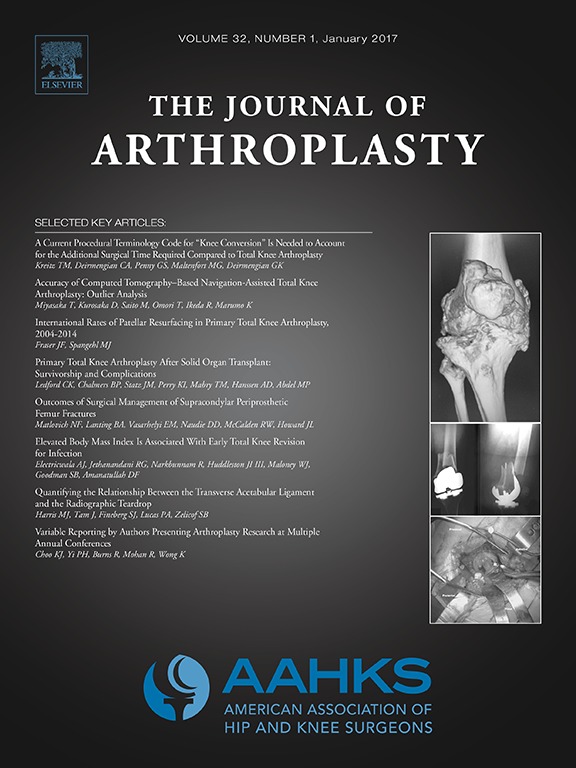
Comparing IPACK block combined with ACB vs ACB alone for pain after Total Knee Arthroplasty
J Arthroplasty. 2020 Jun;35(6S):S173-S177Seventy-two people undergoing unilateral Total Knee Arthroplasty (TKA) were randomized to receive either an infiltration of local anesthetic between the interspace between the popliteal artery and capsule of the knee (IPACK) combined with an adductor canal blockade (ACB) during surgery or ACB alone. The primary outcome of interest was cumulative opioid consumption during the first 24-hours. Secondary outcomes included cumulative opioid consumption in the post-anesthesia care unit (PACU), 8, 16, and 24 hours until discharge. Furthermore, average and worst pain scores were measured at rest and during physical therapy in the PACU, length of stay in the hospital and PACU, as well as pain scores on post-operative day 1 in the morning and evening at rest and during physical therapy. No statistical differences were observed for all secondary outcomes. However, lower pain scores at rest and worst pain scores in the PACU were reported for patients in the IPACK group combined with ACB.
Unlock the full ACE Report
You have access to {0} free articles per month.Click below to unlock and view this {1}
Unlock NowCritical appraisals of the latest, high-impact randomized controlled trials and systematic reviews in orthopaedics
Access to OrthoEvidence podcast content, including collaborations with the Journal of Bone and Joint Surgery, interviews with internationally recognized surgeons, and roundtable discussions on orthopaedic news and topics
Subscription to The Pulse, a twice-weekly evidence-based newsletter designed to help you make better clinical decisions
Exclusive access to original content articles, including in-house systematic reviews, and articles on health research methods and hot orthopaedic topics
Or upgrade today and gain access to all OrthoEvidence content for just $1.99 per week.
Already have an account? Log in


Subscribe to "The Pulse"
Evidence-Based Orthopaedics direct to your inbox.
{0} of {1} free articles
Become an OrthoEvidence Premium Member. Expand your perspective with high-quality evidence.
Upgrade Now












































































